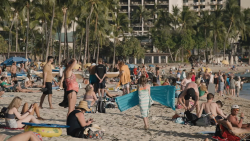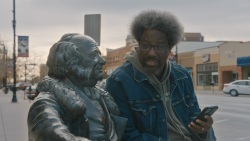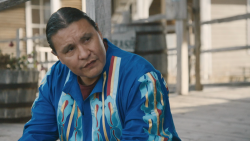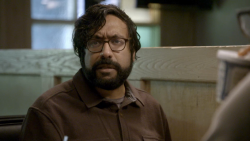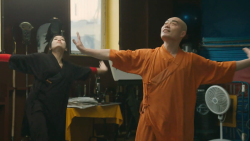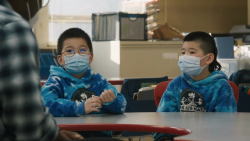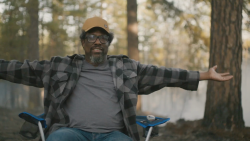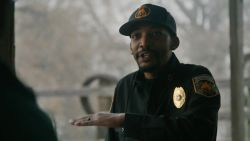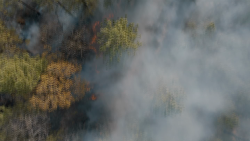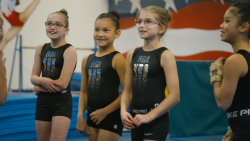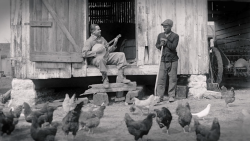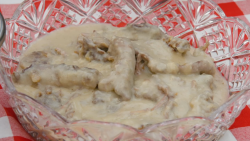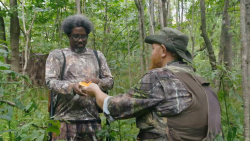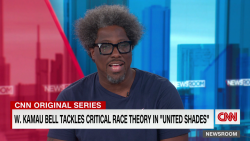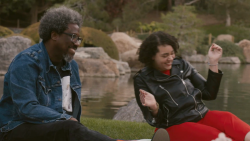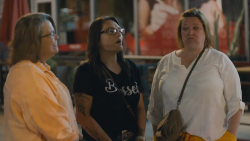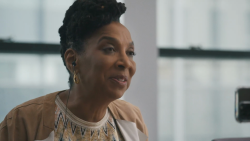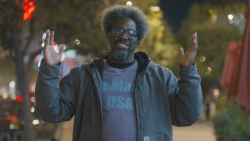Editor’s Note: W. Kamau Bell is a sociopolitical comedian who is the host and executive producer of the Emmy Award-winning CNN Original Series “United Shades of America with W. Kamau Bell.” Kamau has a Netflix stand-up comedy special, “Private School Negro” and a book with the easy-to-remember title “The Awkward Thoughts of W. Kamau Bell: Tales of a 6’ 4”, African American, Heterosexual, Cisgender, Left-Leaning, Asthmatic, Black and Proud Blerd, Mama’s Boy, Dad, and Stand-Up Comedian.” The views expressed here are his; read more opinion on CNN. To learn more about the Hmong, watch “United Shades of America with W. Kamau Bell” on Sunday at 10 p.m. ET/PT.
Right now in this country we are talking regularly about immigrants, refugees and patriotism. And for many of citizens of the United States, these words conjure very specific images and cause them to retreat to very familiar talking points. This Sunday on “United Shades of America,” I meet with several members of a community who challenge all preconceived notions of those words. I head to St. Paul, Minnesota, to visit Hmong-Americans – whose histories are directly tied into the United States of America’s but are rarely discussed. The story of the Hmong is incredibly complicated and nuanced. It involves elements of the stories of immigrants, refugees and patriotism while not neatly fitting into any of those categories.
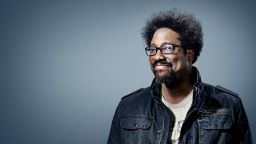
Some of my favorite episodes are the ones where I go in with little to no information, then I spend the whole time having my mind blown. This is one of those.
But I shouldn’t be having my mind blown. We should all already know how the Hmong story intersects with America’s story: through the Vietnam War. And if there is one era of our history that we love talking about, it’s the Vietnam War era. That war has taken upon so much of our national imagination that there is even a Vietnam War movie era. When I was growing up it seemed like every third movie was about the Vietnam War: “Apocalypse Now,” “Platoon,” “Hamburger Hill,” “Born on the Fourth of July,” “First Blood,” “The Deer Hunter,” “Good Morning, Vietnam” and “Full Metal Jacket” just to name a few.
The existence of so many Vietnam War-era films give the impression that we have fully investigated the topic. But as usual with American history, when we think we’re talking about something a lot we are usually only talking about a small part of it, and from a very specific perspective. And primarily it is the perspective that serves whoever is in charge of the dominant narrative. See, to Earth, Superman is a hero (granted one who had no choice about coming to Earth). To Krypton he’s a dude who moved out of the neighborhood when things got hard. Sellout.
When you talk about the Vietnam War from the perspective of the Hmong people, then you have to talk about The Secret War. The Secret War was a CIA-backed war in the country of Laos. During the Vietnam War, the CIA recruited Hmong General Vang Pao to enlist his people to fight against the Laotian and North Vietnamese military. The Hmong fought and suffered losses of 30,000-40,000 of their people in the war.
The United States government promised it would take care of the Hmong after the war. It should come as no surprise to anyone familiar with US history that we didn’t follow through with that promise. Many of the Hmong people had no choice but to flee to the jungle and eventually to refugee camps in Thailand. In the 1970s and 1980s the Twin Cities was open to refugees, and thanks to that, a large number of them settled in Minnesota. That has led to the growth of a strong community of Hmong people there. There are two huge marketplaces dedicated to products and services that cater to the Hmong community. While I was there I connected with Professor Lee Pao Xiong, the founding director of the Center for Hmong Studies at Concordia University in St Paul. The professor gave me a well-annotated history of the entire 5,000-year history of the Hmong people in just a few minutes. He’s a good teacher.
In the episode, I sit down and share a meal with Toua Xiong, the owner of Hmongtown Marketplace in St. Paul. He was a child when his family had to escape to the jungle. His story is heartbreaking, breathtaking and inspiring.
Because the Secret War is recent US history, a number of people who fought and lived through it are still alive. I talk to a few of them in the episode, too, along with their families. And their stories, culture and trauma live on through their children.
Obviously the Hmong story is not just about the past. It is also about interpreting the past for the current day. May Lee-Yang is a Hmong-American and an accomplished playwright. With her friend and collaborator, Laotian-American artist Saymoukda Vongsay, she is creating theater pieces and films to re-examine their shared history and culture. And if you recall how earlier we learned that the Hmong and the Lao had a lot of conflict, then you will immediately know why their work is so revolutionary. Because for the Laotian and Hmong communities, even years later, the divide is still real.
Some Laotian authorities continue to see the Hmong as co-conspirators for fighting with the Americans. And for Hmong people who were born in Laos and also fought in the war, going home to Laos means risking your freedom and possibly your life. But these two artists have come together to show that those divides don’t have to go forward into the future. And that they can have a good time while they heal the divide. In fact, during the taping we had so much fun that we had to put some of it online in the very rare “United Shades of America” segment that was too hot for TV.
I had the most fun learning to play badminton with the Johnson High School Girls Badminton Team, a team that at the time was working on a ten-peat. That’s right, they were on pace to win 10 championships in a row. They make the recent success of my Golden State Warriors look positively adorable.
On this episode, I also sit down with some local Hmong elected officials. In November 2018, Hmong candidates won a record five seats in the state legislature. I meet with Dai Thao, the first-ever Hmong city council member in St. Paul, and two newly-elected state reps, Samantha Vang and Tou Xiong. They explain how their approach to local politics is informed by the Hmong clan system.
The Hmong spent much of their history as farmers in China, Vietnam, Thailand and Laos. And I’m not trying start a fight here, but they are actually credited as among the first to cultivate rice in Asia. And once they arrived In Minnesota, the snow didn’t slow them down at all. In fact, the Hmong make up over half of the farmers in the metropolitan area. I was fortunate to be a guest of Chef Yia Vang at his family’s home for dinner. Chef Yia is co-owner of Union Kitchen, a catering and pop-up restaurant specializing in Hmong cuisine. And his parents, who met in a refugee camp in Thailand, must have had some idea of his future. Because his name literally translates to iron skillet. At dinner they tell harrowing stories of what it was like then – all while feeding me and redefining patriotism right before my eyes.
Some of these stories may seem simple, but they are important. Because one thing I know for sure is that this country has not done a good job listening to or learning from the story of Hmong-Americans. And these are important stories, not just because they are compelling or relatable but because there is a lot to learn from them.
Get our free weekly newsletter
We can learn that immigrant, refugee and patriot don’t always mean what you think. And maybe we can finally learn that when the United States intervenes around the world, real people get caught up and face real consequences. They are people who deserve more than just our bombs and guns. They deserve our respect and our help. And we all know this isn’t theoretical. Because all over the world as I speak, the United States is repeating the same mistakes, over and over again.



